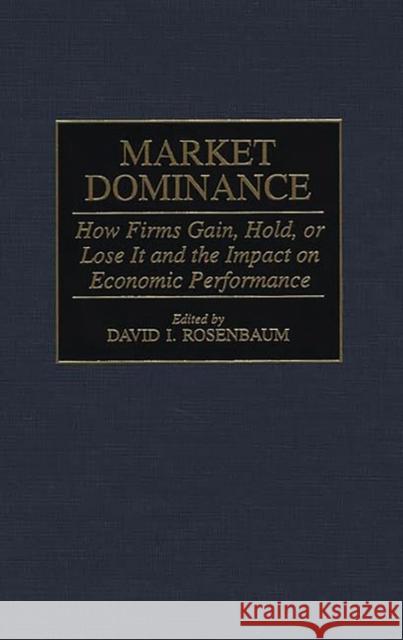Market Dominance: How Firms Gain, Hold, or Lose It and the Impact on Economic Performance » książka
Market Dominance: How Firms Gain, Hold, or Lose It and the Impact on Economic Performance
ISBN-13: 9780275956042 / Angielski / Twarda / 1998 / 280 str.
Market Dominance: How Firms Gain, Hold, or Lose It and the Impact on Economic Performance
ISBN-13: 9780275956042 / Angielski / Twarda / 1998 / 280 str.
(netto: 340,20 VAT: 5%)
Najniższa cena z 30 dni: 355,74
ok. 30 dni roboczych
Bez gwarancji dostawy przed świętami
Darmowa dostawa!
Economic theorizing suggests that firms can acquire and maintain market dominance in a number of ways. Some economists argue that firms attain dominance only by being relatively more efficient than their rivals and retain leadership only by staying more efficient than their rivals. Others argue that efficiency is not the only source of dominance and that leaders can retain preeminence even if they are inefficient. This book attempts to sort out the relevant points by exploring market dominance experienced by firms in ten different industries. It examines factors that led to acquiring, holding and in some cases losing dominance and asks whether those factors were consistent with economic efficiency.
The results suggest that both schools make valid points. Generally, firms that rose to dominance were market pioneers and did so using economically-efficient strategies. In some cases, however, firms rose to dominance using inefficient strategies. Once they reached their ascendance, these firms engaged in a number of strategies, some efficient, others inefficient, to maintain their dominant positions.
Most of the firms examined eventually lost their dominance. In some cases, the market evolved too rapidly for any firm to maintain control. In other cases the fall was ushered along by federal antitrust and trade policy. In still other industries, it was due either to poor management or the firm becoming inefficient. However, even when some of these dominant firms became inefficient, the market system worked only very slowly to remove them.
The analysis has specific implications for antitrust policies toward dominant firms. Because the sources and consequences of dominance can be varied, neither a DEGREESIlaissez faire DEGREESR policy in favor nor a DEGREESIper se DEGREESR injunction against dominance is called for. A reasoned approach, tempered by underlying market conditions, is warranted toward the strategies used to acquire and maintain dominance.











